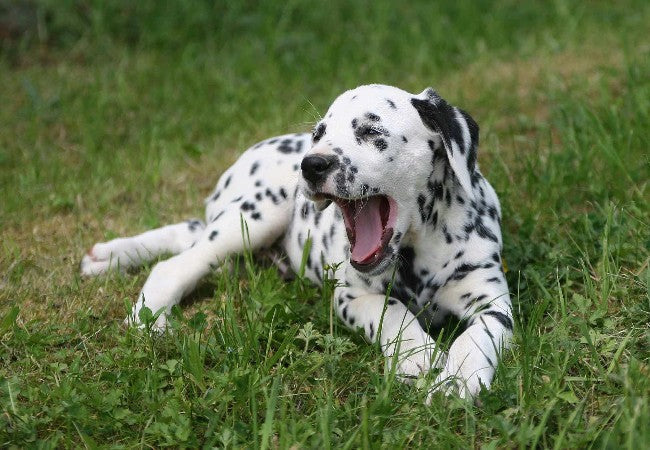Why Dogs Yawn, Lick Lips & Shake Off: Vet Guide to Signals 🐶✨

In this article
Why Dogs Yawn, Lick Lips & Shake Off: Vet Guide to Signals 🐶✨
By Dr. Duncan Houston BVSc
Does your dog yawn when you pet them? Lick their lips at the vet? Or suddenly shake off like they’re drying water—even though they’re bone dry?
I’m Dr. Duncan Houston. These are called displacement behaviors—your dog’s subtle way of saying, “I’m a little uncomfortable here.” In this article, I’ll explain what they mean and how to respond.
🧠 What Are Displacement Behaviors?
Displacement signals are normal behaviors dogs use out of context when they’re feeling uncertain, anxious, or conflicted. They help dogs self-soothe or deescalate a situation.
Think of it as canine body language for: “I’m trying to stay calm, but this is weird.”
🔍 Common Displacement Signals in Dogs
1. 😮 Yawning
- True yawn = tired
- Stress yawn = repeated yawns when not sleepy (e.g., at the vet, before training, during grooming)
2. 👅 Lip Licking
- Out of context = subtle sign of discomfort or appeasement
- May precede turning away or avoiding eye contact
3. 💨 Shake Off
- Full-body shake without water involved
- Common after tense or awkward moments (e.g., meeting a new dog, ending a training session)
4. 🐕 Sniffing the Ground
- Sometimes used to avoid pressure or delay conflict
5. 🧍Freezing or Stillness
- “Pause” behavior = internal conflict (fight, flight, or freeze)
📋 When Do These Behaviors Happen?
- 🩺 At the vet or groomer
- 🐾 During training or new commands
- 👶 Around children or unfamiliar dogs
- 🚪 When anticipating a stressful event (e.g., crate time, departure)
- 📸 During photos or handling, when the dog is “tolerating,” not enjoying
📉 What These Signals Are Not
- ❌ They’re not defiance or stubbornness
- ❌ They’re not misbehavior
- ✅ They’re coping tools—a request for more space, clarity, or calm
✅ How to Respond to Displacement Signals
1. Slow Down
- 🛑 If your dog shows a stress yawn or lip lick—pause your interaction
- 🧠 Give space or switch to something familiar
2. Create Predictability
- 📅 Dogs thrive with routine and clear signals
- 🧃 Use cues and transitions before doing something unfamiliar
3. Reinforce Recovery
- 🎉 If your dog shakes off and resets, reward them for selfsoothing
- 🐾 Praise for calm body language after a stressful event
⚠️ When to Get Help
Frequent or intense displacement behavior can signal deeper issues, like:
- 🧠 Chronic anxiety or poor socialization
- 🦴 Pain or undiagnosed health conditions
- 🐕 A history of punishmentbased training
If these behaviors escalate or happen daily, speak to your vet or behaviorist.
🎁Gear That Supports StressFree Experiences
- Explorer Harness – Comfortable fit that avoids pulling or pressure triggers
- Bungee Lead – Reduces leash stress during reactivity or tense interactions
- Dual Pocket Dispenser – Reinforce positive coping behaviors with instant rewards
💬 What Dog Parents Say
“She’d always yawn during grooming—I thought she was just bored. Now we adjust our pace and she’s so much calmer.” – Rachel & Ivy
“Our trainer explained the shakeoff. Once we recognized it, we started giving space—and our dog became more confident.” – Liam & Rocket
👩⚕️ Want a Behavior Read on Your Dog’s Displacement Cues?
Send video or notes to Ask A Vet and we’ll review your dog’s behavior for stress signals and give you a calmbuilding training plan.
Final Thoughts
Your dog’s body speaks before they bark. Displacement behaviors like yawning, licking, and shaking off are quiet pleas for clarity, safety, and understanding. Listen carefully—your response can build or break their trust.






